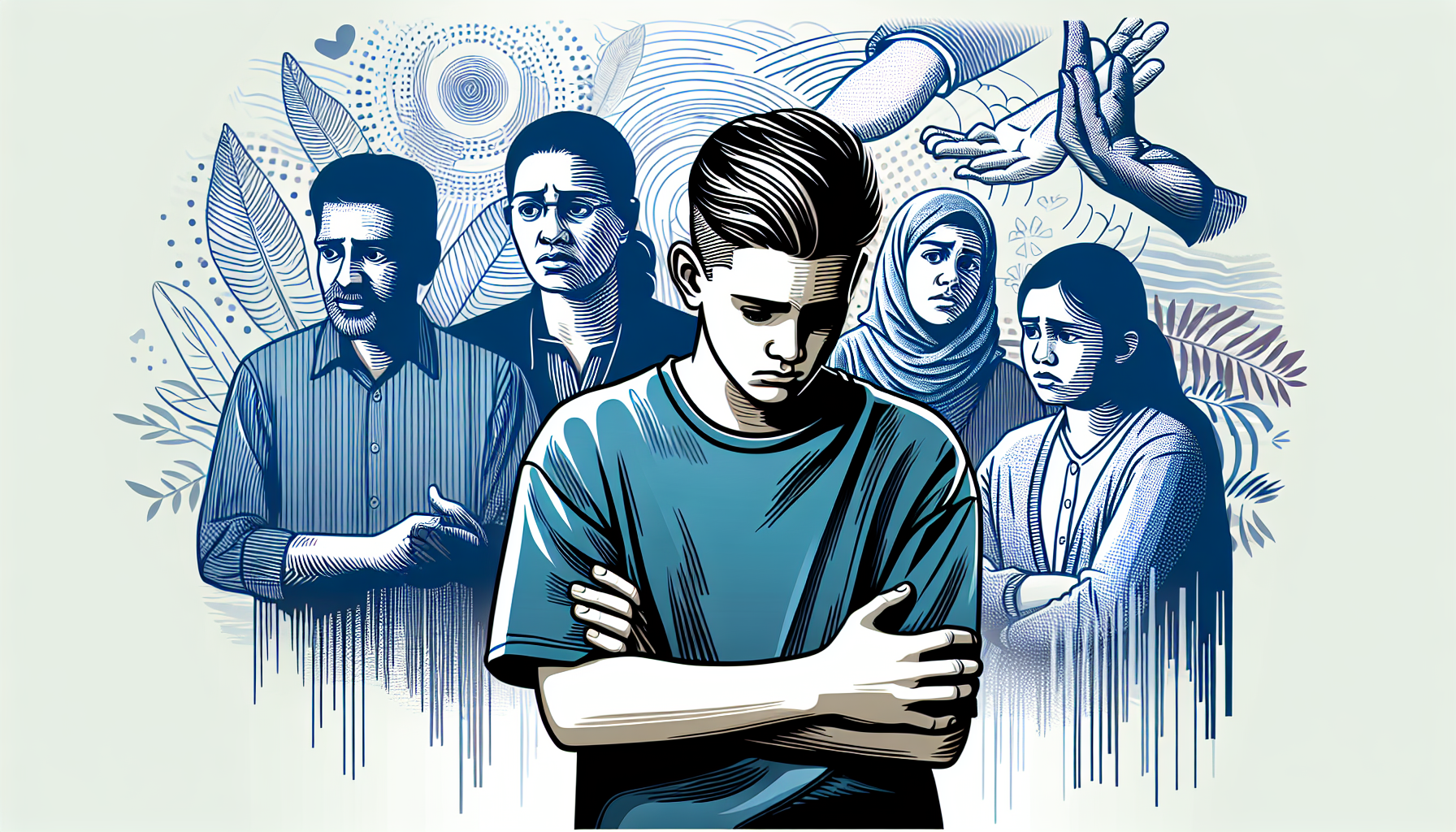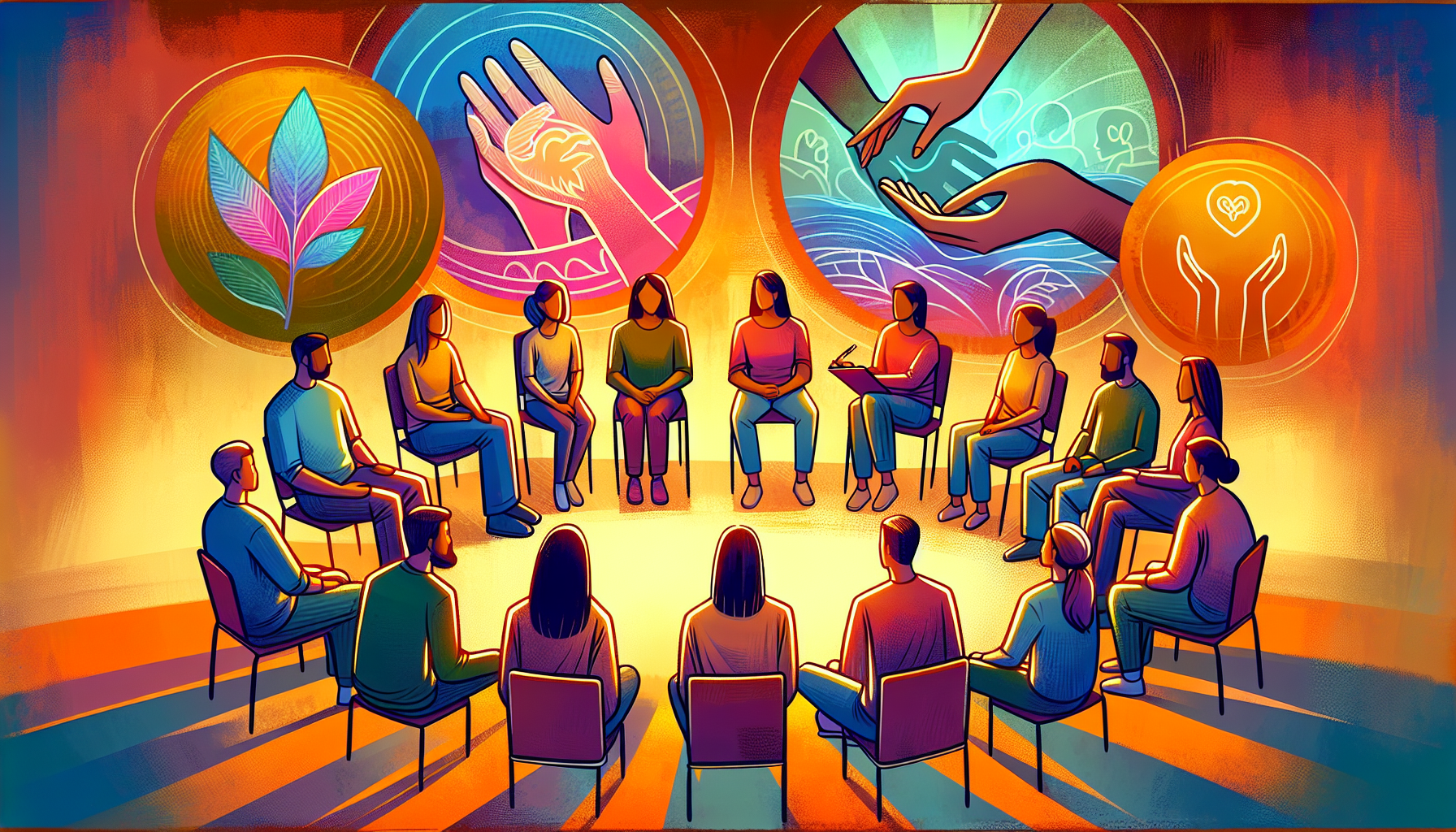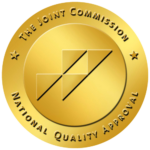Recognizing the signs of enabling an addict is crucial for their recovery. Enabling behaviors, often driven by love and concern, can actually prolong addiction. This article will help you identify these behaviors and guide you in addressing them constructively. Read on to learn the key signs of enabling an addict and ways to foster accountability and healing.
Key Takeaways
- Identifying enabling behaviors, such as making excuses and providing financial support, is crucial for families to promote accountability and support recovery in their loved ones.
- Emotional barriers like guilt and fear can prevent family members from setting boundaries, which are essential for breaking the cycle of enabling and aiding the recovery process.
- Establishing clear boundaries, allowing natural consequences, and engaging in therapy and support groups are key steps for families to stop enabling addiction and foster healthier dynamics.
Recognizing Enabling Behaviors

Recognizing the signs of enabling an addict are crucial for breaking the cycle of addiction. Enabling often involves making excuses, taking on responsibilities, and providing resources that facilitate substance use. While these actions are often motivated by love and concern, they can contribute to the addict’s self-destructive behaviors and hinder their recovery. Families need to identify these behaviors to promote accountability and long-term recovery.
Enabling behaviors can be subtle and difficult to recognize. They often stem from various emotional motivations, including guilt, fear, and a sense of hope. While these behaviors may seem helpful in the short term, they can significantly impede the addict’s journey to recovery.
Here are some common enabling behaviors and how they manifest.
Making Excuses for Negative Behaviors
One of the most common enabling behaviors is making excuses for the addicted person’s negative actions. Family members frequently rationalize an addict’s actions instead of addressing the underlying issues. Addicts often present themselves as victims, claiming that external circumstances or incidents caused their addiction, thereby diverting responsibility for their actions. This manipulation allows them to avoid personal accountability and perpetuates their addictive behaviors.
Making excuses and accepting the addict’s portrayal of themselves as blameless victims unintentionally reinforces the addictive behavior. Breaking this cycle is necessary to encourage the person struggling with addiction to face the reality of their actions and seek help.
Recognizing this pattern and holding the loved one accountable is necessary for their recovery.
Providing Financial Support
Providing financial support is another significant way in which family members enable addiction. This support allows the addict to avoid facing the repercussions of their actions. While it may seem like offering financial assistance is a way to help, it often shields the addict from the natural consequences of their behavior and hinders the recovery process.
Refraining from providing financial support promotes accountability and encourages the addicted individual to seek help. This approach helps the addict realize the severity of their situation and the need for change. Although challenging, it is a necessary step in fostering a healthier environment for recovery.
Ignoring or Trivializing Substance Use
Ignoring or trivializing substance use is another form of enabling that can have serious consequences. When family members dismiss the seriousness of addiction, they signal acceptance of harmful behavior, which can reinforce the addict’s harmful habits. Acknowledging addiction as a serious issue is critical in promoting effective recovery strategies.
Recognizing the need for accountability and addressing substance abuse head-on can lead to more constructive support for the loved one dealing with addiction. This means not downplaying the severity of their substance use and taking proactive steps to encourage them to seek addiction treatment.
Emotional and Psychological Signs of Enabling

Enabling behaviors impact not only the addict but also create a cycle of dysfunction affecting the entire family. The emotional and psychological toll can lead to significant dysfunction within family interactions, often causing negative dynamics. Recognizing these signs is key to breaking the cycle and promoting a healthier family environment.
Enabling relationships often stem from a desire to feel needed and a fear of losing the relationship. This unhealthy interdependence can prevent family members from asserting their own needs and identities.
Here are some emotional and psychological signs of enabling and ways to address them.
Feeling Guilty About Setting Boundaries
Guilt is a powerful emotion that can prevent family members from setting clear boundaries with an addicted loved one. Feelings of failure and emotional turmoil often arise when parents confront their child’s addiction, making it difficult to take action. The primary enabler in the family tends to focus all their attention on the substance user, further complicating the ability to set boundaries.
Overcoming feelings of guilt allows family members to set and maintain healthy boundaries. Addressing this emotional barrier protects their well-being and promotes a healthier family dynamic. Setting boundaries is an act of love and care, not a sign of failure.
Fear of Conflict or Rejection
Fear of conflict or rejection is another emotional barrier that leads to enabling behaviors. Family members often avoid addressing a loved one’s addiction due to a fear of serious conflict. Addicts may threaten to cut ties with family or resort to self-harm if confronted about their problems, creating a high-stakes emotional environment.
Fear-driven avoidance can lead to maladaptive coping skills and the formation of unhealthy roles within the family. Addressing these fears and confronting the addiction in a supportive yet firm manner helps break the cycle of enabling and promotes recovery.
Accepting Blame for Loved One’s Actions
Accepting blame for a loved one’s actions is a common enabling behavior that perpetuates the cycle of addiction. Guilt often prompts family members to cover up a loved one’s behavior, leading them to unjustly accept blame for the addicted person’s actions. Addicts often portray themselves as blameless victims of circumstance, manipulating their loved ones’ feelings.
Through manipulation, addicts shift the blame for their addiction onto their loved ones, further solidifying the cycle of enabling. Recognizing this manipulation and refusing to accept blame for the addict’s actions helps address the root causes of enabling behaviors and promotes healthier family dynamics.
Impact of Enabling on Family Dynamics

Enabling behaviors, while often well-meaning, can have a profound impact on family dynamics. These behaviors may actually prolong the addiction cycle, as they prevent the addict from facing the consequences of their actions. Allowing someone to face the repercussions of their actions fosters accountability and personal growth.
Support systems, including family therapy, are crucial in recovery. They help family members understand their roles and the impact of their actions on the recovering individual.
Here are the specific impacts of enabling on family relationships and how to address them to promote healthier dynamics.
Strained Relationships Among Family Members
Enabling behaviors can strain relationships among family members. Parents may struggle to set limits due to feelings of inadequacy and emotional distress. A family member struggling often experiences an overwhelming sense of failure when attempting to set boundaries with an addicted loved one.
This emotional distress can lead to conflicts and resentment among other family members who may feel neglected or manipulated. The primary enabler often diverts attention solely to the individual with addiction, neglecting the emotional needs of other family members.
Addressing these issues through open communication and support is crucial.
Creating Codependent Relationships
Enabling behaviors can create codependent relationships within families. Codependency is an unhealthy relationship pattern where family members engage in behaviors that foster dependency and prevent the addict from taking responsibility for their actions. Substance users often depend on their loved ones for financial and emotional support, reinforcing these codependent behaviors.
Parents of addicts frequently feel a deep sense of responsibility for their child’s well-being, which can lead to enabling behaviors. Addressing codependent relationships is essential for promoting a healthier family dynamic and supporting the recovery process.
Hindering the Recovery Process
Enabling behaviors can significantly hinder the recovery process. By allowing substance users to avoid facing the consequences of their actions, family members may prolong their addiction and delay recovery efforts. Enabling behaviors prevent the loved one from recognizing the severity of their addiction and the need for change.
Allowing natural consequences to occur promotes accountability and personal growth. Refraining from enabling behaviors helps family members support the addict’s recovery journey more effectively.
Steps to Stop Enabling Addiction

Stopping enabling behaviors is crucial for the recovery process. Establishing clear boundaries, encouraging natural consequences, and seeking professional help are key steps in breaking the cycle of enabling. Identifying and changing these behaviors is challenging but necessary for promoting long-term recovery.
Support groups and professional resources provide valuable strategies and emotional support for families dealing with addiction. Here are detailed steps on how to implement these strategies effectively.
Establishing Clear Boundaries
Setting and maintaining clear boundaries is key to preventing enabling behaviors. Practicing saying no when necessary helps reinforce these boundaries. When the family holds the addicted person accountable with consequences, it changes enabling behaviors positively.
Clear boundaries help define personal values and ensure respectful communication within the family. This approach fosters a healthier family dynamic and supports the recovery process.
Encouraging Natural Consequences
Natural consequences differ from punishment, as they arise from the individual’s behavior rather than external interventions. Allowing natural consequences to occur helps the addicted individual recognize the impact of their actions and learn from their mistakes.
Encouraging natural consequences promotes accountability and personal growth. This step is crucial in breaking the cycle of enabling and supporting the addict’s recovery journey.
Seeking Professional Help and Support Groups
Recovery programs and support resources are key for stopping enabling behaviors. Engaging in family therapy enhances understanding and breaks the enabling cycle, providing essential support and strategies for families dealing with an addiction treatment program.
Finding support groups is crucial for self-support when a loved one is struggling with addiction. These groups offer a platform for sharing experiences and learning effective strategies to avoid enabling behaviors.
The Role of Support Systems in Recovery

Support systems play a crucial role in facilitating recovery while avoiding enabling behaviors. Families can benefit from resources like the SAMHSA National Helpline for guidance and support. Accessing recovery programs and community support significantly aids in overcoming enabling behaviors and connects individuals with the mental health services administration.
Support groups offer emotional aid and practical advice for those affected by addiction. They provide a platform for sharing experiences and finding shared solutions among those in a support group affected by addiction.
Here are specific support strategies and their benefits.
Benefits of Family Therapy
Family therapy offers healing and a path to recovery for family members. It effectively addresses enabling behaviors by fostering healthier communication. Improved family support enhances the likelihood of a person in recovery staying sober.
Family therapy is crucial for improving family dynamics and supporting the recovery process. It helps members express their concerns and work together towards a healthier future.
Individual Therapy for Family Members
Individual therapy offers family members essential coping strategies to manage the stress and emotional burden of loving someone with an addiction. It helps them develop tools to manage their feelings and reactions to a loved one’s addiction.
Processing emotions and managing stress are crucial for the well-being of family members. Individual therapy helps them navigate their emotional landscape, enabling them to support their loved one without falling into enabling behaviors, ultimately contributing to their mental health.
Joining Support Groups
Joining support groups is highly recommended for connecting with others facing similar addiction issues. These groups provide a safe environment to share experiences and insights on stopping enabling behaviors.
Combining support groups with professional help enhances the recovery process and addresses enabling behaviors effectively. Support groups offer emotional support, practical advice, and shared solutions among those affected by addiction.
Summary
Enabling behaviors, although often rooted in love and concern, can perpetuate the cycle of addiction and hinder the recovery process. Recognizing these behaviors and understanding their emotional and psychological impact on the family is the first step towards breaking the cycle. Establishing clear boundaries, encouraging natural consequences, and seeking professional help are crucial steps in this journey.
Support systems, including family therapy and support groups, play a vital role in facilitating recovery while avoiding enabling behaviors. By taking these steps, families can promote accountability and support their loved one’s journey to recovery, fostering healthier family dynamics and a brighter future for all involved.
Frequently Asked Questions
What are enabling behaviors?
Enabling behaviors are actions that inadvertently support an addict’s substance use, such as making excuses for their behavior, providing financial assistance, and downplaying the severity of their addiction. It’s important to recognize and address these behaviors to promote healthier relationships and recovery.
How can I stop enabling my loved one?
To stop enabling your loved one, establish clear boundaries and allow them to face the natural consequences of their actions. Seeking professional help and joining support groups can also foster accountability and aid in their recovery.
What is the difference between helping and enabling?
Helping maintains boundaries and supports recovery, whereas enabling allows addictive behaviors to persist by avoiding necessary consequences and accountability.
How does enabling affect family dynamics?
Enabling negatively impacts family dynamics by creating codependent behaviors and straining relationships, ultimately hindering recovery efforts. It is essential for families to establish healthy boundaries to support positive change.
What role do support systems play in recovery?
Support systems are crucial in recovery as they offer emotional support, practical advice, and strategies to promote healthier behaviors, ultimately enhancing the recovery process. Engaging with these networks significantly increases the chances of successful outcomes.





